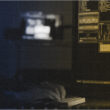In this article today, we are going to discuss one important topic related to business insurance claims. We are going to discuss professional negligence, how to reduce claims related to it and the role insurance can have in protecting your business from claims related to professional negligence.
Here we go!
Let’s start with the very basics first!
What is professional negligence?
Professional negligence is when a professional (such as a consultant, advisor, or broker) fails to provide a reasonable standard of care in their work for a business client, resulting in a financial loss for the business.
When a professional agrees to provide professional services to someone else that needs them, the professional must exercise “reasonable care” in doing so. Reasonable care is described as “the level of caution and concern for one’s own and others’ safety an ordinarily sensible and logical person would exercise in the same situation.” Professional negligence arises when a professional fails to fulfill his duties to the standard expected. This expected standard is the degree of service that a reasonable expert in that field would provide.
Can any accusation of negligence qualify as a negligence claim?
While any individual can be accused of negligence, professional negligence claims can be made only against someone who is deemed an expert in the concerned field.
To file a claim for professional negligence, as a business you must meet all the following requirements:
Loss suffered: You must have sustained some loss as a result of the professional’s negligent activities. The loss could be financial, health-related, or other.
Duty of care: You engaged in a contract (which may not be written always) that obligated you to exercise a duty of care. A moral or legal commitment to ensure the safety of others is referred to as a duty of care.
Breach of duty: The professional did not provide the best service possible. Furthermore, if the professional’s service fell below a reasonable standard for someone in his position, you could file a breach of duty claim.
Moreover, when a claim for professional negligence is lodged, two methodologies are typically used to determine whether the reasonable duty of care was fulfilled. These are – the foreseeability test and the multifactor test.
Foreseeability tests are used to determine if the professional could have reasonably expected that his conduct, or lack of it, would cause the customer injury or losses. To evaluate a professional’s duty of care, multifactor tests consider multiple elements, including:
- Whether there were any other, safer, or less damaging solutions.
- Whether the professional could have opted for a different path of action.
- The severity of the damage
- The expense of choosing a different path of action
A successful claim must be supported by proof that the service delivered fell short of the expected standards of the profession. The service must also have resulted in obvious negative effects for the client or customer, such as financial damages, or injuries. If the claimant is not able to demonstrate concrete damages incurred as a result of the professional’s actions, they will be unable to claim negligence.
Furthermore, the claimant is obligated to take reasonable steps to mitigate any possible losses resulting from professional negligence. This is referred to as a “duty to mitigate.”
Some common examples of professional negligence claims-
• A medical professional gives the wrong drug to a patient, resulting in severe damage or even death.
• An accountant offering poor financial advice, causing a client to miss out on important tax breaks and incur hefty tax expenditures.
• An architect creating plans for a residential extension that does not meet the requirements of planning permission, requiring the client to destroy and rebuild the extension.
• A property advisor fails to provide critical information regarding the purchase of a property, which has a substantial impact on its value.
Common signs of professional negligence
The difficulty in identifying professional negligence originates from a lack of essential knowledge regarding the same. Often, these issues go unnoticed because the individual is unaware that something has indeed gone wrong!
To ascertain whether you have encountered professional negligence, you must look for certain symptoms. To begin, you may consider the following:
- Slow communication or excuses- If the professional provides slow responses consistently enough, the delay may eventually lead to loss. For example, failure to file a claim on time may lead to the expiry of a limitation period. Alternatively, if the professional makes lame excuses for not acting sooner on updates or responses, this can also be a sign negligence.
- Conflicting advice: If the professional’s opinion is continuously changing or his advice is inconsistent, it may be a sign of negligence. Here, the professional may be inexperienced or lack the necessary skills to advise.
- Your condition is deteriorating or not improving: If your condition appears to be worsening as a result of a medical professional’s actions or advice, you may be getting negligent service.
Study of professional negligence: industry specific
Here, the concept of professional negligence will be studied with respect to manufacturers, builders and repairers. From the explanations, you will get a better view of the liability of such professionals.
A manufacturer has a responsibility to all customers who are expected to use his items. If the products are harmful or defective, the duty might be assigned to anybody who will be reasonably affected by the defect in the product. As a result, the negligence claim is not barred by the law of privity of contract, which stipulates that only a party to a contract can sue. Manufacturers are not the only ones who are not liable; those who provided or distributed such products are also liable. Manufacturing negligence can take the form of:
1) A lack of duty care during the production process may result in a defective product.
2) Lack of duty of care during product design, resulting in failure to do proper research
3) Failure to provide effective danger alerts,
4) Failing to carry out the tests effectively,
5) Failure to recall a product or issue proper warnings if a danger becomes evident after the product has been circulated.
While claiming product liability, only the manufacturer can be held accountable for failing to exercise due care and damaging the party. Therefore, the party must be able to prove it, which may be costly and difficult. It is impossible to avoid liability unless the plaintiff can demonstrate how the negligence occurred. Manufacturers must demonstrate how they accepted responsibility for providing safe, high-quality products by avoiding defective goods and taking reasonable care of employees during the manufacturing process.
Building projects involve a larger number of professionals, each of whom performs a unique role in the process. Hence, everyone is held accountable for duty of care and skill. There may be disagreements between professionals and non-professionals about contribution and contributory fault. Local authorities are sometimes involved in construction projects as well.
The repairer of an article has a duty to anyone who uses the product legitimately to inspect it to determine if it has been carefully fixed or not. In the case of distributors, the plaintiff must demonstrate that they were negligent in their handling of the specific goods in some way or other.
How can professionals reduce claims of professional negligence?
If you provide professional services where negligence claims are frequent, you must be proactive in order to minimize potential professional negligence claims. Let’s discuss some best practices that could assist you significantly to limit your exposure.
- Set realistic expectations
It’s easy to go overboard in an attempt to win a client by promising results that you are not convinced enough to deliver. This is a very simple way for your company to become engaged in a professional liability lawsuit. When discussing results with your clients, make sure to set realistic expectations so that you can avoid unpleasant and sometimes costly situations. The clients may feel tricked and are entitled to compensation, in such situations.
- Have a precisely written contract
Always insist on a precise and clearly-worded contract that aptly defines the nature and scope of work for every customer. Make sure to do this irrespective of whether it’s a new connection or an extension of an existing project. It is critical to address all the areas of the project in the contract, to avoid all confusion and resulting claims later on.
- Establish regular communication
It is critical to have open lines of communication with the client. Notifying customers of difficulties and developments in a timely manner will enhance their view of your professionalism, even if the news is an unpleasant one. Unexpected and sudden changes may irritate the customer, making them hold you liable for professional negligence. Maintain constant communication with your clients. Even if you have nothing new to share, make sure they know you are still working on their project with complete commitment.
- Maintain proper records
Unfortunately, many professional negligence cases begin with ‘ he said so’ accusations from both sides. The easiest method to counter this is to ensure that you keep meticulous records of all professional services delivered so far. It is usually preferable to establish agreements and make decisions via email rather than on phone. This way, you will have a record of what was stated and agreed upon. Record your client talks if you prefer doing business over the phone or in person. If you are uncomfortable doing so, seek an email confirmation of what was agreed upon so that you have a record of it.
- Stay updated
Keeping up with the newest advances in your field will protect you from professional negligence lawsuits. It’s also critical to keep up with the changes in the relevant statutory regulations.
How can insurance protect businesses from professional negligence claims?
Even if a business ends up winning claims of professional negligence, it can inflict significant financial and reputational harm. Such disputes can be extremely difficult and time-consuming to resolve, resulting in exorbitant legal costs. If you are running a business, you must be proactive and stay clear of potential claims. They can do so by developing an effective risk management strategy and adopting appropriate business insurance. These types of claims will be covered by professional liability insurance (also termed as errors and omissions insurance). It will protect you financially from claims of malpractice, errors, negligence and omissions made while delivering professional services to your clients.
When a professional negligence claim is made, your insurance coverage will pay for the legal defence, judgements, and settlements up to the limits defined in the policy. Please note that professional liability insurance is a claims-made policy. This means the policy must be active at the time the incident that resulted in the claim occurred and when the claim was reported to the insurer. It’s also critical to note that professional liability coverage contains exclusions that they will not cover. These mostly include criminal conduct or intentional harm to a client caused by a professional.
It’s no wonder why insurers have devised plans to cater to the unique needs of numerous business sectors. This is because that many professional services belonging to different sectors involve highly specialized risks. For example, law firms seeking to protect themselves from negligence claims would purchase a legal professional liability policy designed to cover the most common risks associated with that field of work. On the other hand, software development firms would purchase tech E&O insurance to safeguard their specific exposures.
The footnote:
The concept of negligence is fairly frequent in everyday life. Many people suffer loss or suffering as a result of the negligence of others. We hope the discussion above will help you understand what professional negligence is and how to reduce claims related to it. We have also discussed other important aspects related to professional negligence from the insurance point of view.








